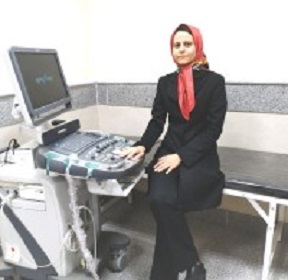Speakers
Farbod Hatami
Birjand University, Iran IranTitle: Chest pain in a young male with carbon monoxide poisoning and substance abuse
Abstract:
Myocardial infarction is a rare entity as a consequence of carbon monoxide poisoning in a healthy young adult. We reported a 29-year-old man who presented with constant chest pain after a night he had smoked tobacco and consumed smokeless tobacco in the setting of carbon monoxide poisoning. An electrocardiogram showed ST-segment elevation and echocardiography revealed akinesia. Cardiac markers were elevated. The thrombolytic therapy was along with successful outcomes in this case. We believe the case and the discussion done could shed light on the management of such individuals in the emergency department.
Biography:
Farbod Hatami is experienced as a medical doctor, he is a critical thinker with experience in designing research protocols, project management, data collection, and assisting the research teams in experimental studies, clinical trials, case-control, cohort, and population-based studies. He has experienced a research assistant role by which mastered laboratory techniques, statistics, epidemiology, and public health systems.
Taherah Mohammadabadi
University of Khuzestan IranTitle: Camel milk; a unique superfood for health complications and cardiovascular challenges
Abstract:
Camel milk is considered a superfood with medicinal values. Currently, consumers' interest in camel milk has been increased due to its health benefits. Camel milk is rich in vitamins C, Mn, iron, Cu, and Zn rather than cow milk. It is a suitable substitute for human milk in kids with allergies to cow milk due to the lack of β-lactoglobulin and low β-casein as allergic proteins. Camel milk has a high amount of immunoglobulin’s, insulin-like protein, and protective enzymes like lactoferrin, peptidoglycan recognition protein, lactoperoxidase, and lysozyme. Furthermore, lactic acid bacteria of camel milk as strong probiotics are important for gut health and function. The smaller size of nanobodies of camel milk prevents food allergy and enhances the immune system and inflammations. Camel milk is effective on cholesterol content and cardiovascular diseases. Probiotic bacteria of camel milk may interfere with cholesterol absorption from the intestine by de conjugating bile salts and preventing reabsorption. Hypocholesterolemic peptides have been resulting in cholesterol reduction by binding to cholesterol or reducing the micellar solubility of cholesterol and inhibiting cholesterol absorption. The presence of orotic acid produced from nucleic acid metabolism is responsible for the lowering of cholesterol amount. Casein hydrolysates produced by Bb12 culture or trypsin significantly reduced cholesterol levels by 24–87%. The decrease in cholesterol levels may also be due to the direct interaction of the side chain of arginine and tyrosine amino acids with the cholesterol and the formation of the apoprotein-cholesterol complex, which is dependent on the amount of arginine. Fermented camel milk has inhibitory peptides of angiotensin I-converting enzyme (ACE) which is produced by proteolytic digestion of casein and whey protein that regulate blood pressure. The administration of camel milk for 45 days significantly decreased hyperlipidemia; total cholesterol, triacylglycerol, free fatty acid, LDL, and VLDL, and improved HDL content. Lactoferrin, immunoglobulins, and antioxidants of camel milk led to improve cardiovascular challenges in type 1 and 2 diabetes. Using camel milk for 6 months reduced LDL and triacylglycerols in type 1 diabetic cases. Reduction of 1% in cholesterol reduces the risk of cardiovascular diseases by 2–3%. Therefore, camel milk is not only food but also it is recommended as a miraculous superfood for heart health and cardiovascular disorders.
Biography:
Taherah Mohammadabadi finished her PhD in Iran and Australia and has been as a researcher at University of Queensland, Australia; she has attended and presented her works in different conferences in some countries. She is working as academic member, researcher and teacher since 11 years ago in Faculty of Animal Science and Food Technology, Agricultural Sciences and Natural Resources University, Iran. She has been as supervisor for 10 PhD students and more than 30 Msc students. She has over 200 published publications, conferences presentations, and scientific projects; Also, some books on phytochemicals and microbes, bioactive components in the livestock milk; milk lactoferrin and health, anti-diabetes properties of camel milk. She is member of the editorial board and reviewer of some international and national journals.
Somaye Farokhnejad
Qom university of medical science IranTitle: Valve in valve procedure in mitral valve
Poster
Furkan khurshid
Adesh university IndiaTitle: ECG in myocardial infraction – Clinical approach
Abstract:
Ischemia occurs when part of the heart muscle, the myocardium, is deprived of oxygen and nutrients. Common causes of ischemia are:
- Narrowing or obstruction of a coronary artery.
- A rapid arrhythmia, causing an imbalance in supply and demand for energy.
A short period of ischemia causes reversible effects: The heart cells will be able to recover. When the episode of ischemia lasts for a longer period of time, heart muscle cells die. This is called a heart attack or myocardial infarction. That is why it is critical to recognize ischemia on the ECG in an early stage.
Signs and symptoms of myocardial ischemia:
- Crushing pain on the chest (angina pectoris), behind the sternum, often radiating to the lower jaw or the left arm
- Fear of dying
- Nausea
- Shock (manifesting as paleness, low blood pressure, fast weak pulse) shock
- Rhythm disturbances (in particular, increasing prevalence of ventricular ectopia, ventricular tachycardia, AV block)
Diagnosis of MI on ECG:
- The diagnosis of acute myocardial infarction is not only based on the ECG.
- Elevated blood levels of cardiac enzymes (CKMB or Troponin T) AND
- One of the following criteria is met: a. The patient has typical complaints,
- b. The ECG shows ST elevation or depression.
- c. pathological Q waves develop on the ECG
- d. A coronary intervention had been performed (such as stent placement)
- So the detection of elevated serum cardiac enzymes is more important than ECG changes. However, the cardiac enzymes can only be detected in the serum 5-7 hours after the onset of the myocardial infarction. So, especially in the first few hours after the myocardial infarction, the ECG can be crucial.
ST-elevation
New ST elevation at the J-point in two contiguous leads with the cut-off points: ≥0.2 mV in men or ≥ 0.15 mV in women in leads V2–V3 and/or ≥ 0.1 mV in other leads.
ST depression and T-wave changes.
New horizontal or down-sloping ST depression >0.05 mV in two contiguous leads; and/or T inversion ≥0.1 mVin two contiguous leads with prominent R-wave or R/S ratio ≥ 1
Biography:
Furkan Khurshid is currently pursuing a bachelor's in cardiac care technology from adesh medical University Bathinda, Punjab. He has numerous international and national certifications.




